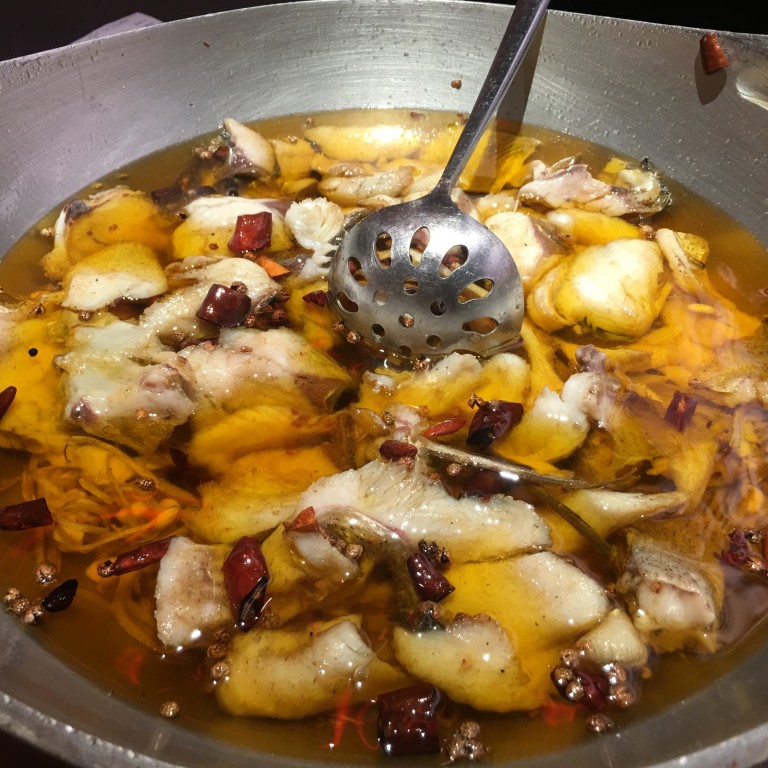
Fish boiled in water, a Chinese way to let freshness and tender texture of the flesh shine
- From spicy Sichuan and sour Yunnan styles to cooked in steel pots, Chinese water-boiled fish dishes come in many forms, most of which can be found in Beijing
- These three restaurants are all popular for their water-boiled fish dishes, though one was a major disappointment
Among the myriad ways to cook fish, water-boiling is popular in China as a simple method that brings out the freshness and tender texture of the flesh.
From the north to the south, people in China have developed their unique styles to water-boil fish, many of which you can find served in the country’s capital. Here are three restaurants in Beijing that are popular for their signature water-boiled fish dishes.
Yunnan boiled fish in sour soup at Cravings
Boiled fish in sour soup – or suan tang yu – is a famous delicacy in Guizhou, Yunnan and Sichuan. At Cravings, which has two outlets in Beijing, the Yunnan Dali carved plums boiled fish in sour soup is one of its most popular dishes.
The restaurant’s food designer, Xiao Liang, says the Yunnan style of boiled fish in sour soup uses carved plums pickled in alcohol and bean paste chilli sauce to make the broth.
“While people in Yunnan, Sichuan and Guizhou all like to eat sour soup dishes, they use different ingredients to get the sourness,” says Liang, who is from Yunnan province. “To get the specific sour taste I want, I added Yunnan quince into the soup – which has to be boiled for about six hours – to counteract the sweetness from the alcohol-pickled plums.”
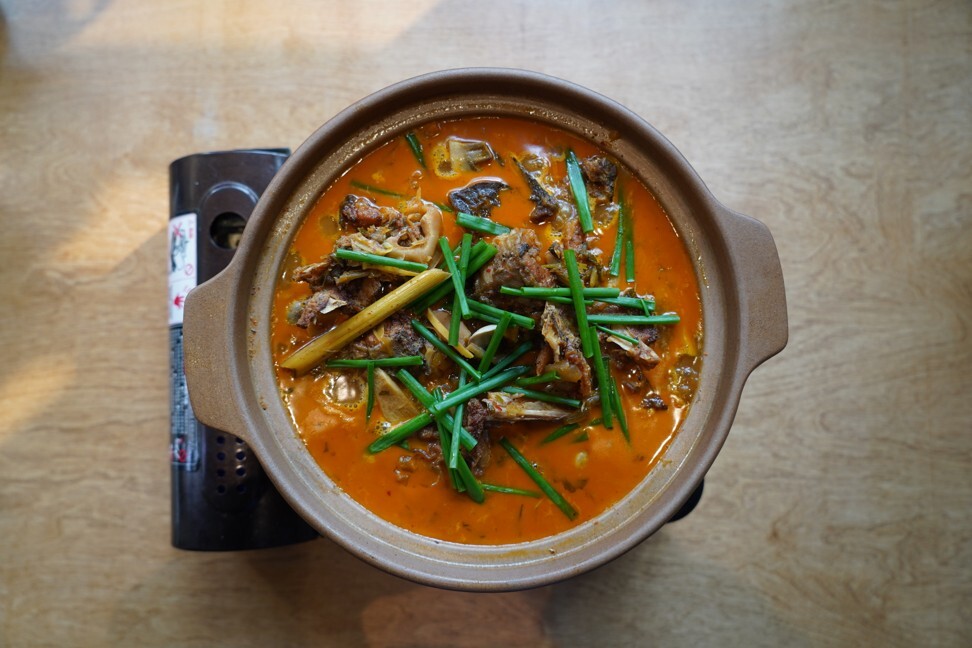
With the exception of the fish, which is deep-fried before it is added to the soup, all the ingredients are from Yunnan.
“Locals in my hometown get all the fish they need to make this household dish from the Er Lake, but the fish we use at Cravings are longsnout catfish we bought in Beijing,” Liang says.
“The soul of suan tang yu, however, is the soup, not the fish. The degree of sourness must be mastered with precision. The sourness I am after is not astringent, but balanced with depth.”

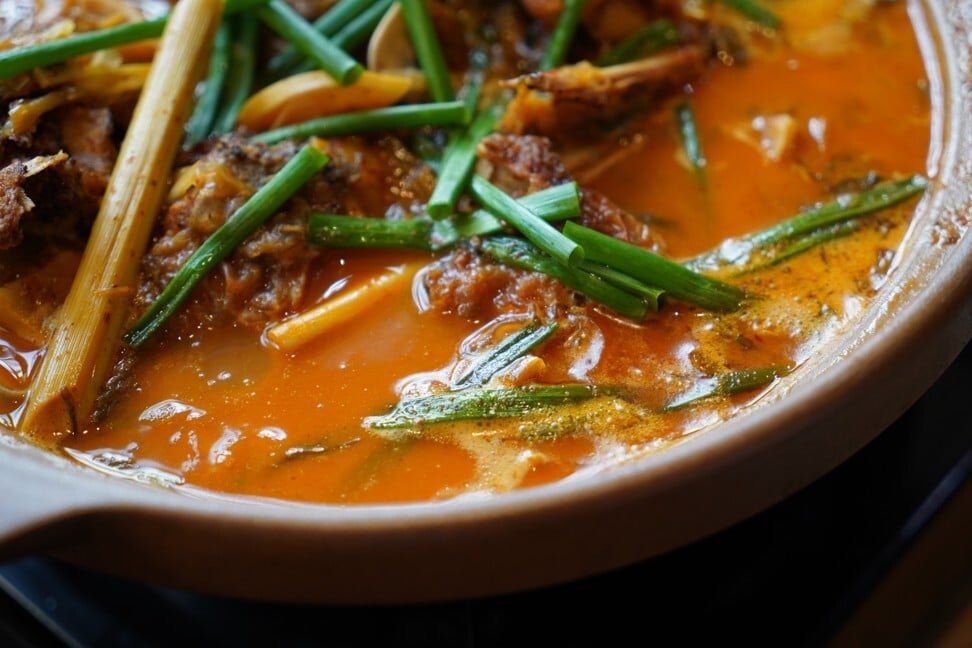
The large dish, which costs 88 yuan ($13.20), comes served on a stove. The slightly spicy soup was so delicious we drank all of it. Customers can also order side dishes such as vegetables to cook in the soup hotpot-style.
Cravings, Block A, South Gate, Longfu Temple Building, 95 Longfu Temple Street, Beijing, tel: 13021086693
Northeastern steel pot water-boiled fish at Yujiu Tieguodun
Tie guo dun, or steel pot stewing, is a traditional cooking method in northeastern China where households keep a large steel pot fired by charcoal to cook fish, chicken, goose and vegetables. During winter, big families surround the pot when eating to keep themselves warm.
At Yujiu Tieguodun, a hole-in-the-wall eatery in Beijing’s Xicheng District, its trademark dish is steel pot water-boiled fish. Customers can choose different types of fish from its fish tanks; we picked a longsnout catfish at 156 yuan per kilogram.

At the centre of each table is a large steel pot. First, fish oil was fried in the pot, after which the fish and broth, made from boiling fish for several hours, was added. A waiter then covered the pot with a wooden lid for around 15 minutes.
As the soup somewhat evaporated after boiling for a long time, we asked the waiter to add some water. She said, however, they do not add water as it dilutes the umami of the soup.
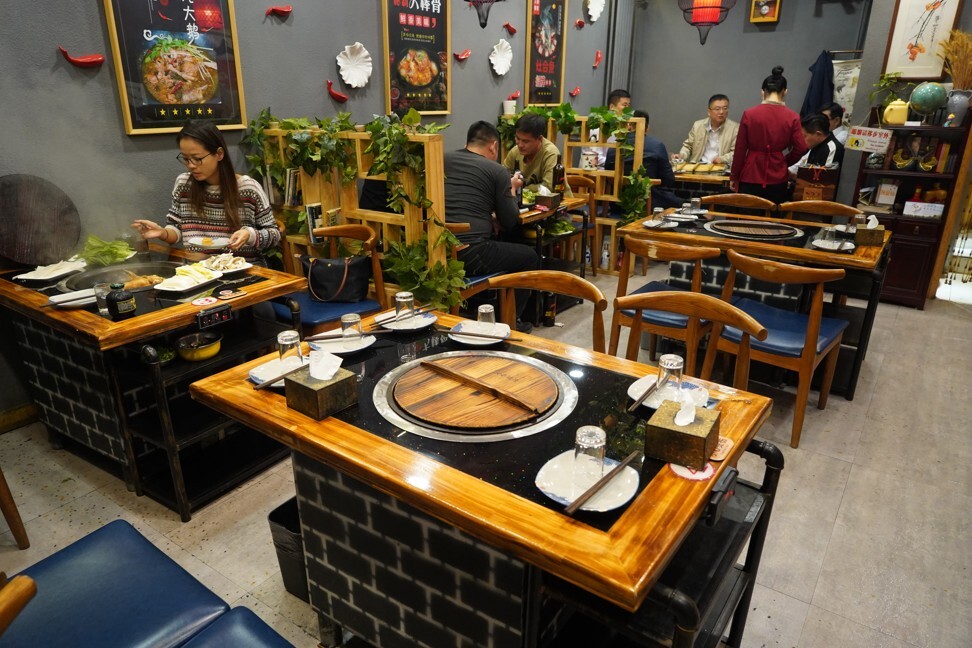
The final bill was cheap, with the whole fish weighing 1.35kg costing only 210 yuan.
Yujiu Tieguodun, San Li He Nan Liu Xiang Dong Ce Lu, Fuxingmenwai Street, Xicheng District, Beijing, tel: 18146541967
Sichuan water-boiled fish at Longrenju Three Gorges Water-boiled Fish
Serving the famous Sichuan water-boiled fish, or shui zhu yu, the Longrenju restaurant chain has outlets listed at number one, two and five on Dianping, the most popular food guide in China, when you search for water-boiled fish.
The name of this Sichuan dish is actually a misnomer as it is cooked in 100 per cent oil instead of water.
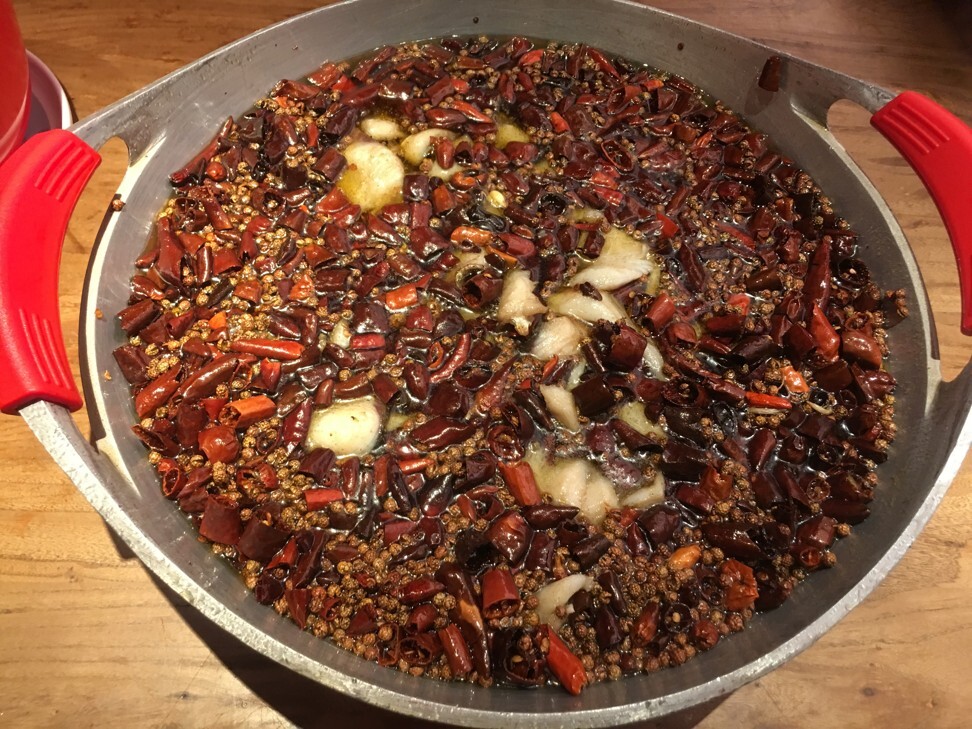
Customers can choose grass carp (118 yuan per kilogram), longsnout catfish (256 yuan per kilogram) or ladyfish (236 yuan per kilogram). We ordered a whole ladyfish weighing 1.6kg. There’s no way for customers to know whether the fish served is fresh as the restaurant, unlike others of the same kind, does not have tanks on display from which customers can pick their fish.
We found the fish fillet came with too many small bones and was not very fresh. It also tasted like grass carp, the cheapest fish on offer.
Why the Ovolo hotel chain has gone all vegetarian for a year
My dining guest, food critic Man Chui, a Hongkonger who has lived in Beijing for two decades, said the restaurant’s number-one ranking on Dianping must have been bought, instead of coming from real customer reviews.
“Their price is too expensive for such food standard,” he said.
“When I first came to Beijing around 2002, specialist restaurants serving this Sichuan delicacy were everywhere. The big ones always have fish tanks for customers to choose their fish. Longrenju is a large chain so they should also do the same as that’s the only way to assure customers that the fish served is fresh.”

He added that there are now far fewer shui zhu yu restaurants as people are more conscious about health. “Consuming large amounts of oil and chilli is not healthy.”
Man explained that shui zhu yu is a commoners’ dish that doesn’t require great skills to make as the oil and chillies provide most of the taste.
“Sichuan people use grass carp from shallow waters as they don’t have deepwater fish. It is a cheap fish with a lot of bones. So as long as the fish offered in the dish is fresh, it tastes good. But Longrenju doesn’t deliver in this respect. Even the bean sprouts are not fresh.”
Longrenju Three Gorges Water-boiled Fish, 45 Xinyuan Street, Xinyuanli, Beijing, tel: 86-10-84602441

